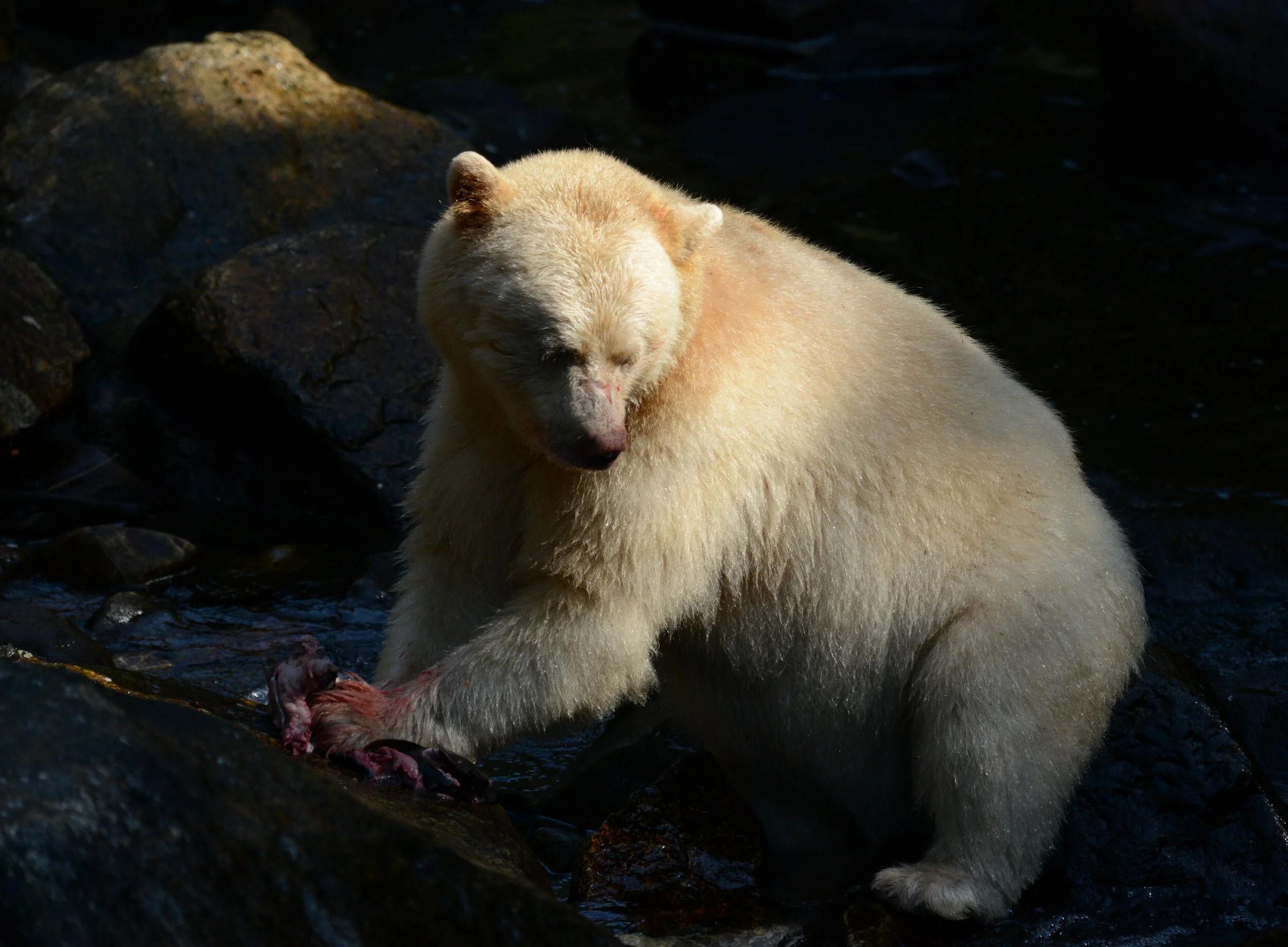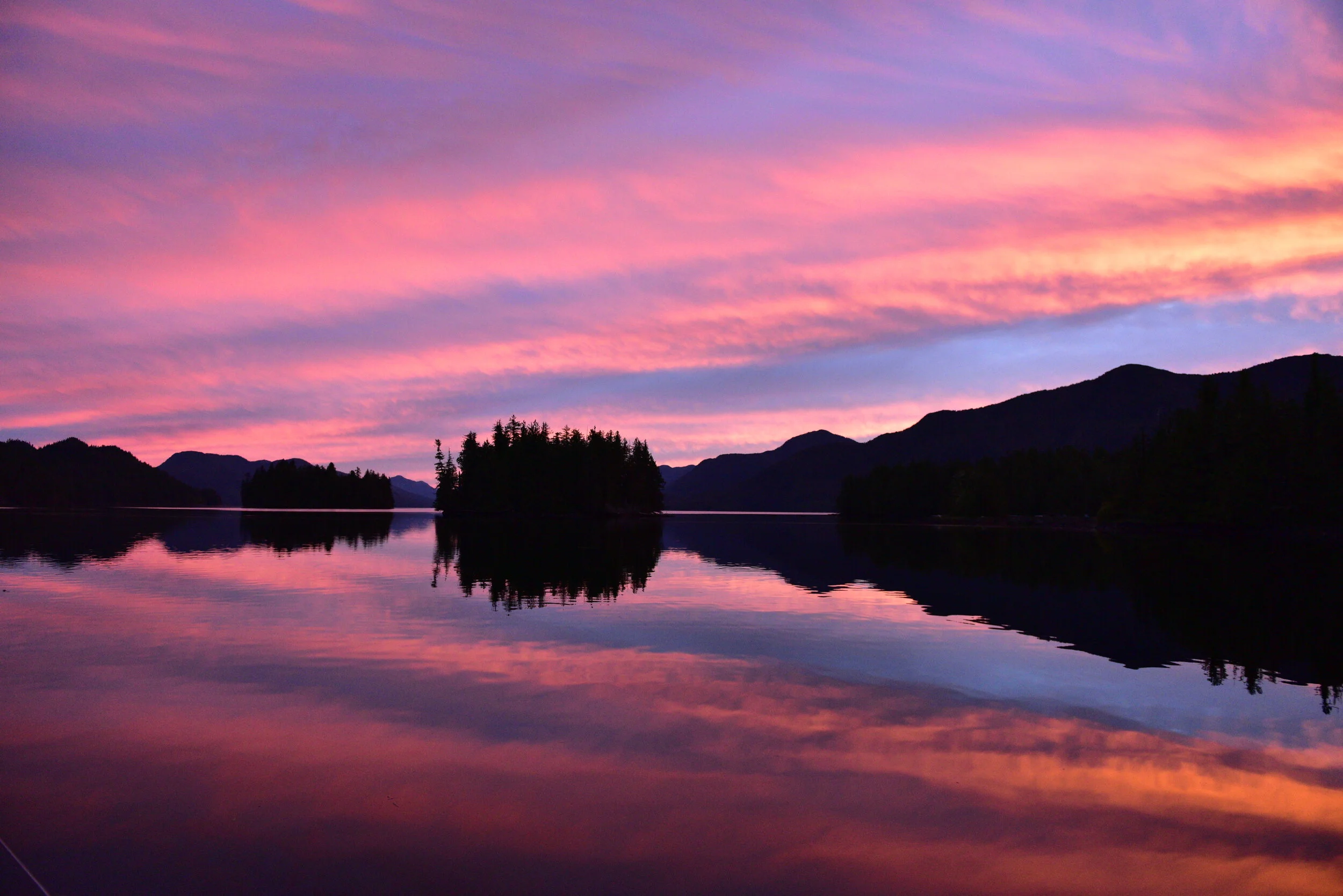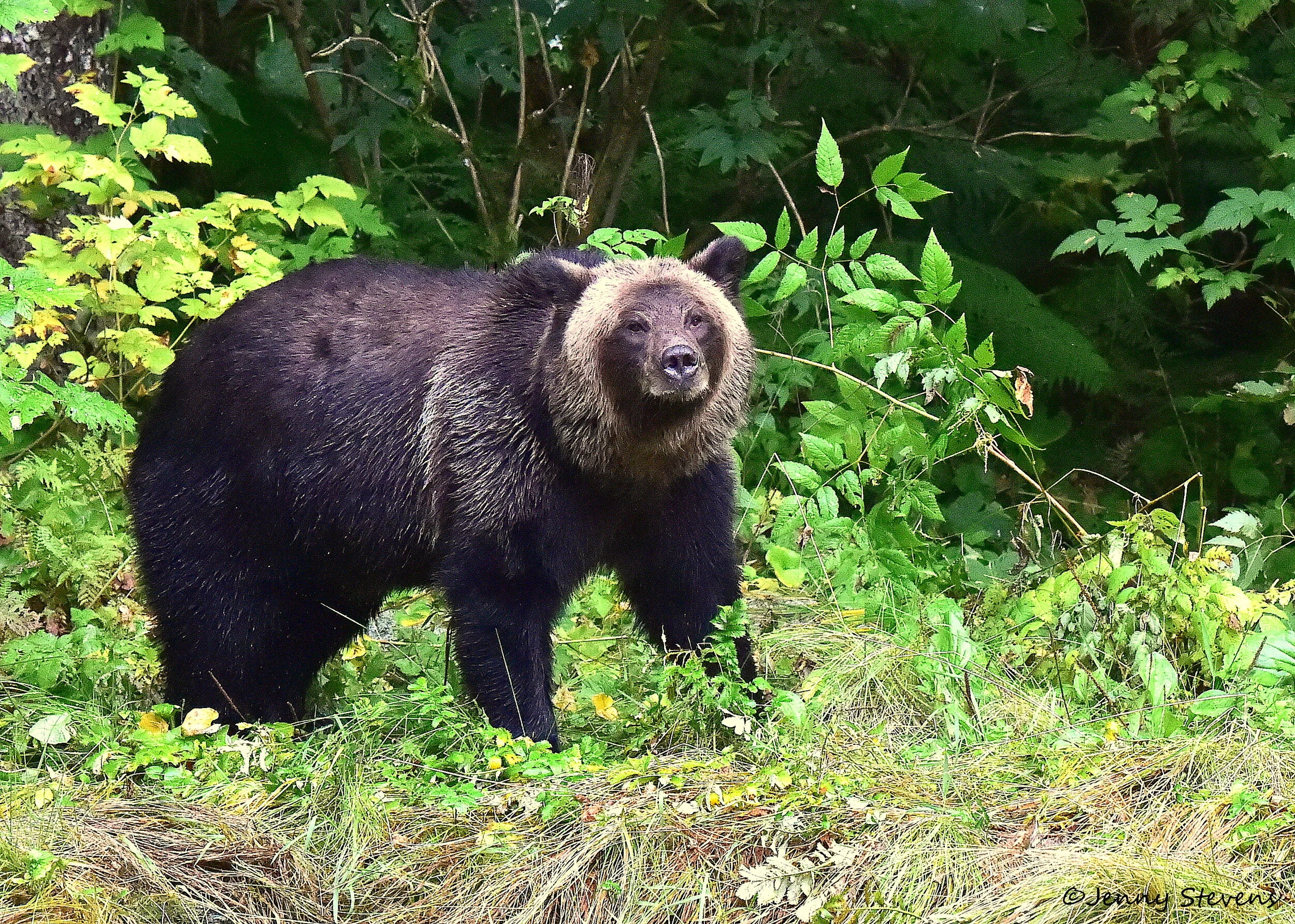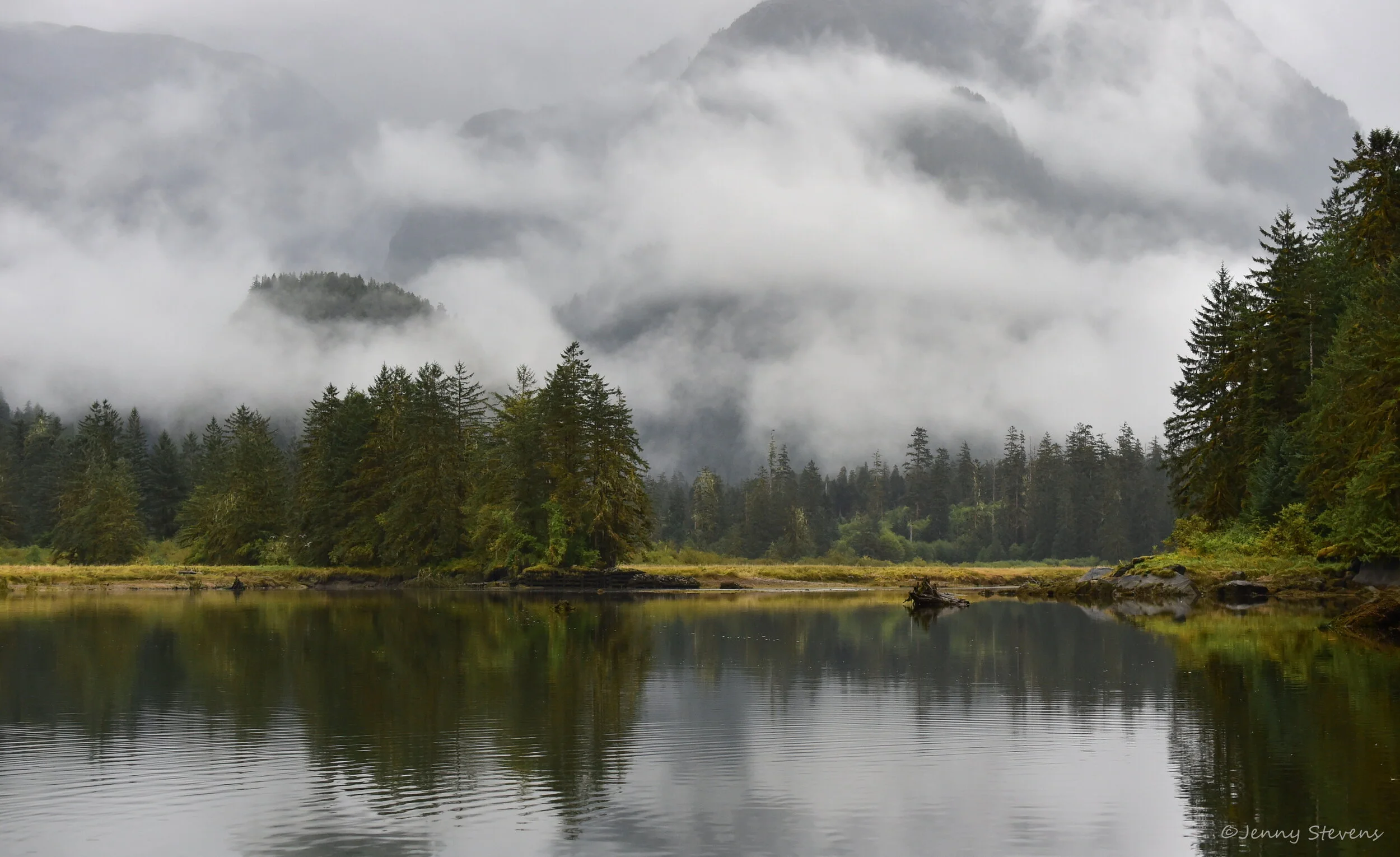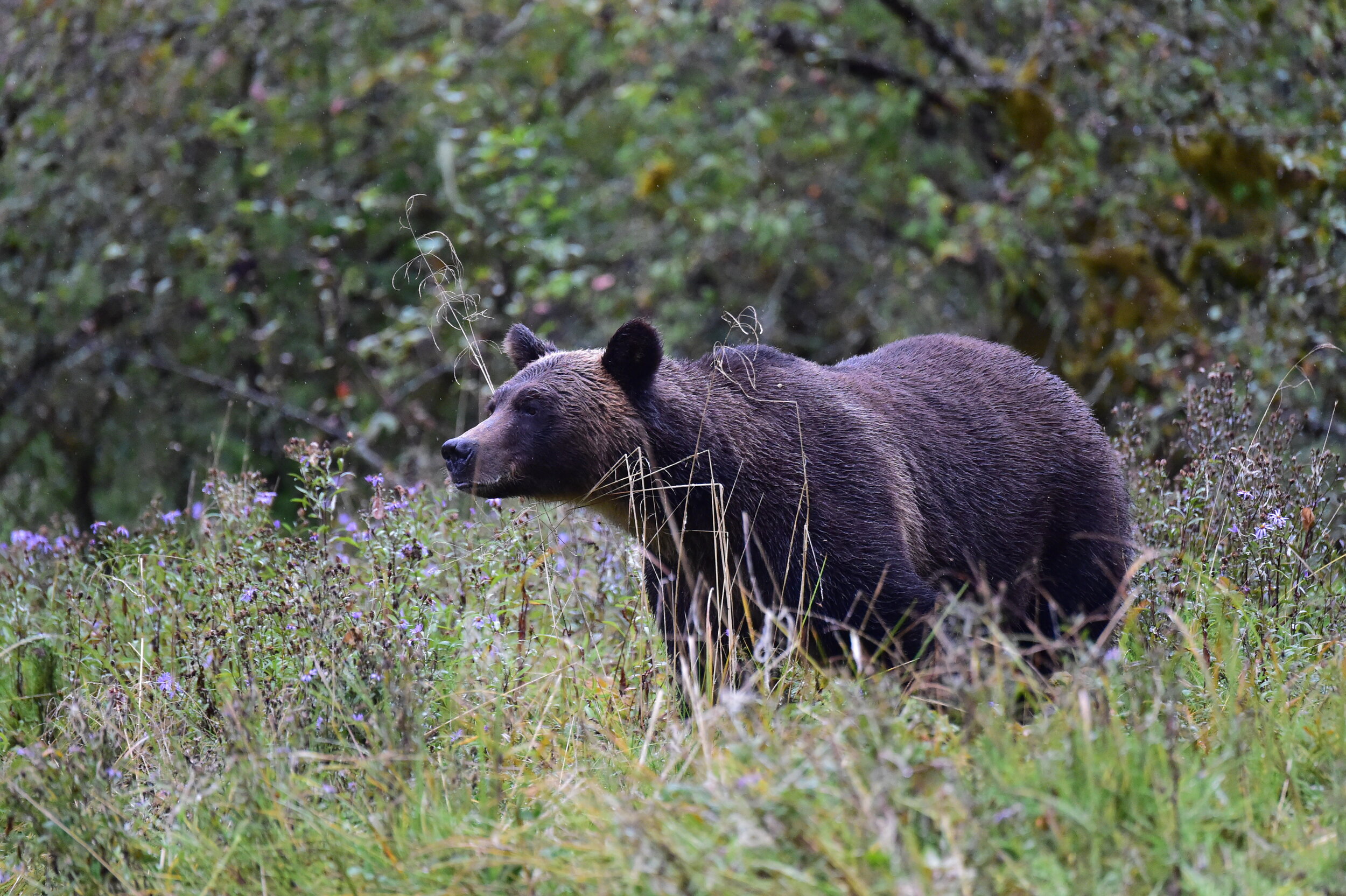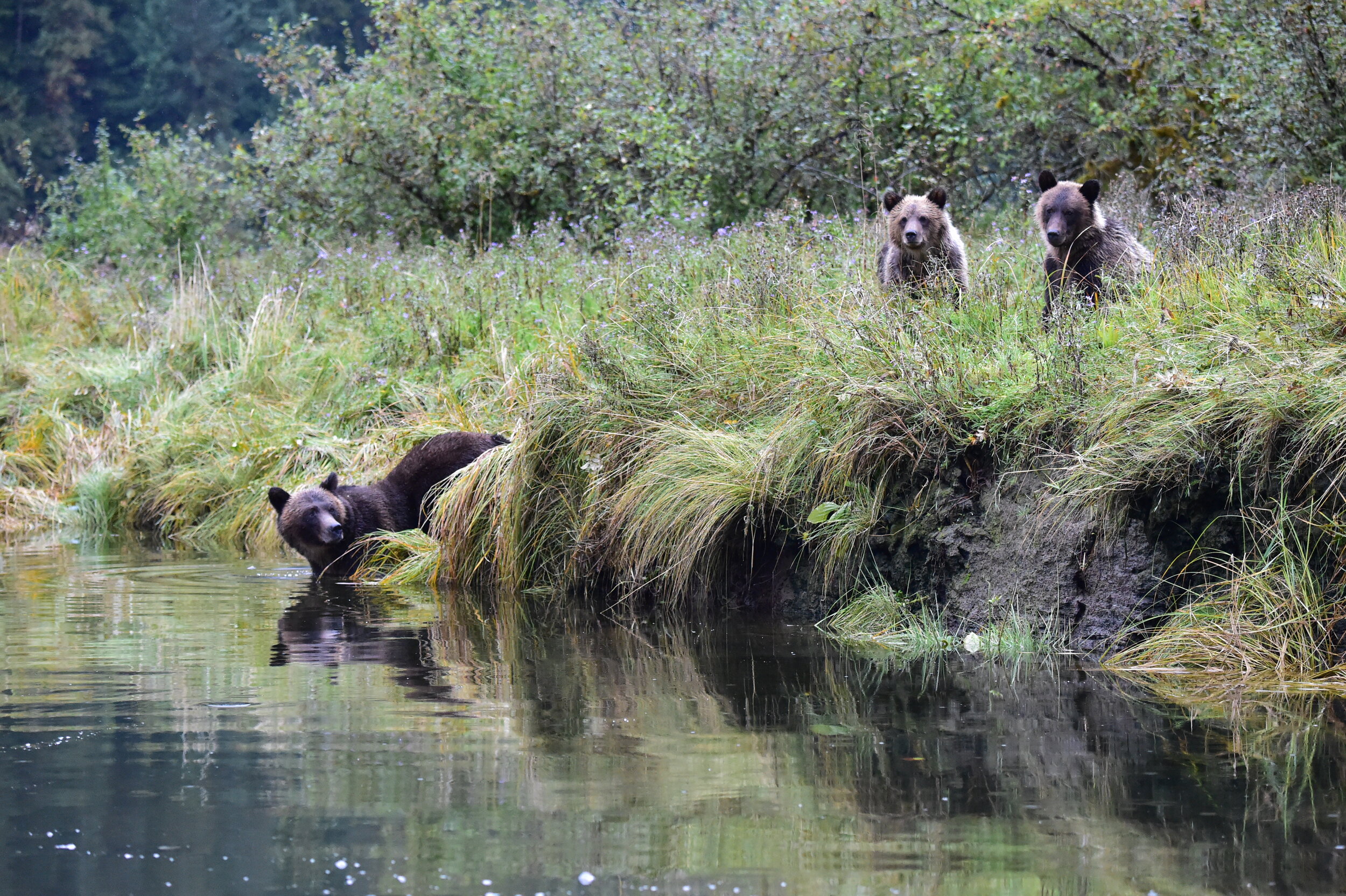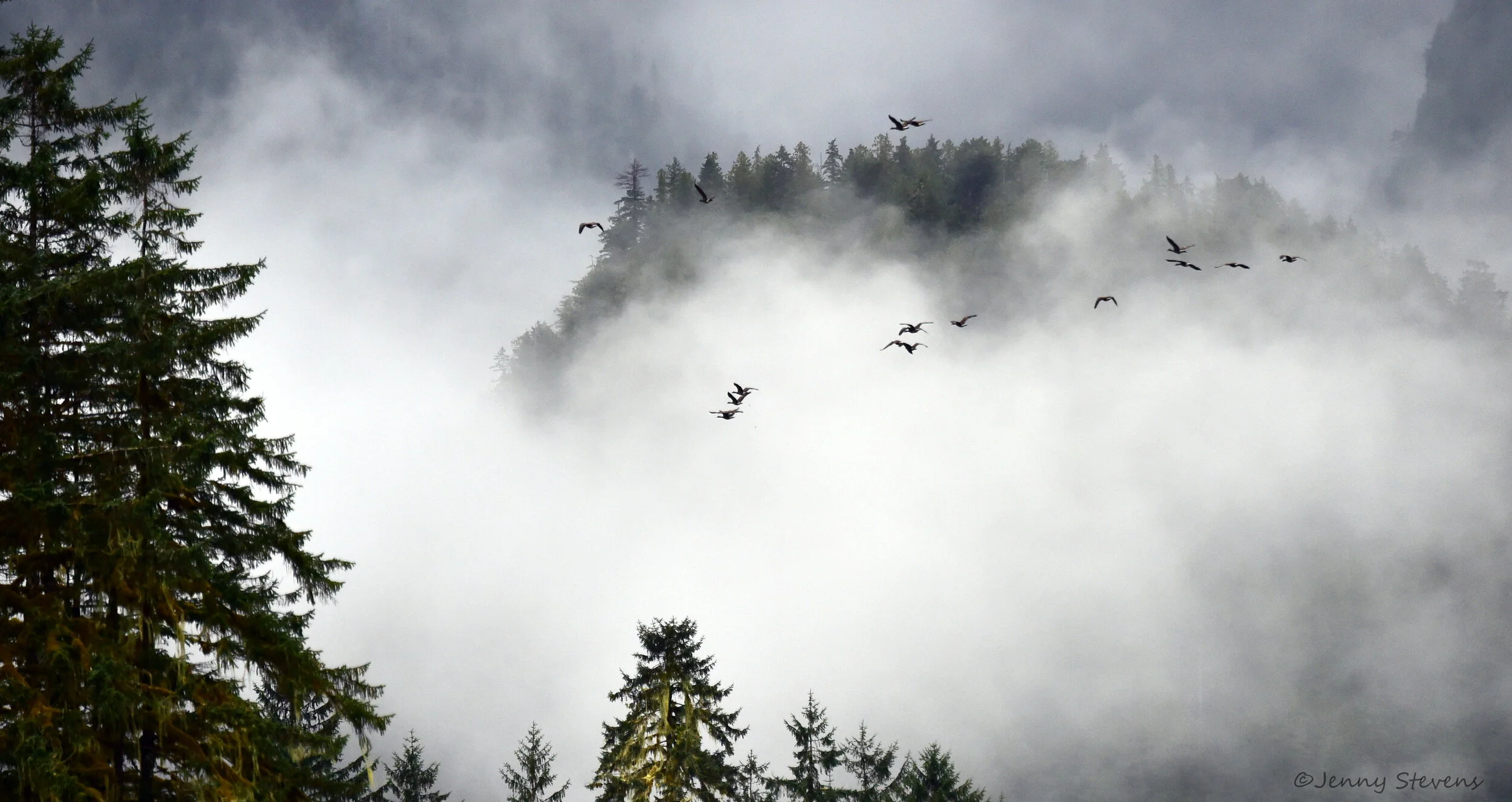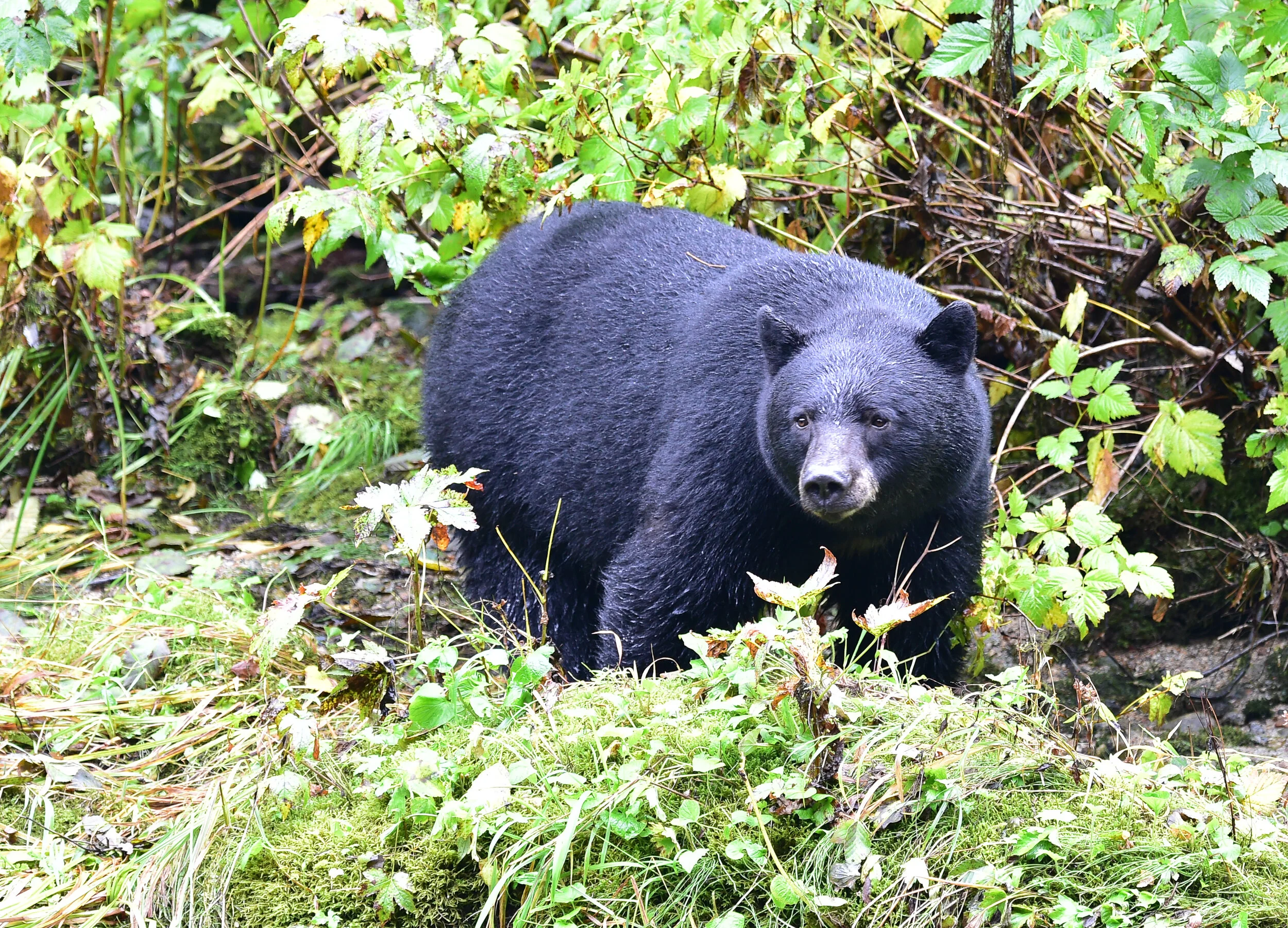
Great Bear Rainforest, B.C.
The Great Bear Rainforest is a temperate rain forest on the Pacific coast of British Columbia, Canada comprising 6.4 million hectares. It is part of the larger Pacific temperate rainforest ecoregion, which is the largest coastal temperate rainforest in the world.
Humpback Whale feeding alone in the morning fog in the Grenville Channel off Hawkesbury Island.
Grizzly Bear who looks as if he just came from the groomer ! Khutze Inlet is a fjord surrounded by nearly 4,000-foot peaks at the southern end of Princess Royal Channel, and stretches inland toward British Columbia’s Coast Mountains..
Kermode or 'Spirit" Bear. Even 'Ghost' bear to some. This is a black bear found in the Great Bear Rainforest. It is not Albino, but carries a recessive gene - such like blue eyes in humans - and when two black bears carrying this gene mate, they can have a pure white cub.
Spirit Bear with a Pink Salmon in Riordan Creek on Gribble Island. No one knows how many Spirit Bears there are, but the estimate is between 175 and 400.
Sad Sack Spirit Bear
Humpback Whale diving at sunset. Lifting his flukes for a deep dive. Taken off Royal Princess Island.
Kermode Bear with a larger salmon to eat on shore. Researchers have found that spirit bears are 30% more successful at hunting salmon during the day than the black coloured bears. This is thought to be because from a salmon's point of view the light animal is better camouflaged against the sky.
Kermode or Spirit Bear trying to capture a spawning Pink Salmon. Riordan Creek.
A Pod of Humpback Whales. The first sign of whales in an area is usually the ‘blow’. Air leaves the blowhole at more than 400 kms an hour (250 mph). When the whales surface, the exhalation of warm air produces a distinctive cloud, formed by condensation of vapour expelled from the lungs under great pressure.
Humpback Whales Bubble Net-Feeding. This technique, known as bubble-net feeding, occurs when a pod of whales near the surface of the water rounds up their prey (usually fish or krill) inside the circle of bubbles they've created using their blowholes. The bubbles may stun the prey, which are then consumed by the whales. They make a perfect circle with their bubbles.... amazing
Humpback Whales Bubble Net-Feeding off Hogan Island, northern BC.
Humpback Whale checking us out. Whale breath is quite fishy to smell, and if a blow happens to drift on to an unsuspecting photographer they will find their equipment will have a light smear of oil on it.
Spirit Bear enjoying a meal of Pink Salmon. Riordan Creek, Gribble Island, BC
The Great Bear Rainforest is one of the most beautiful places I have seen.
Large male Kermode Bear checking the spawning Pink Salmon in Riordan Creek.
Spirit Bear checking a pool for spawning Pink Salmon.
Butedale is a ghost town on Princess Royal Island, in British Columbia, Canada. It was founded in 1918 as a fishing, mining and logging camp. Initially the salmon cannery was established by Western Packers which was purchased and operated by the Canadian Fishing Company until it ceased operating in the 1950s. At its peak the summertime population of Butedale was over 400 people.
Kermode Bear having a shore lunch of Pink Salmon.
Reflections of a Spirit Bear in Riordan Creek on Gribble Island.
A Walk in The Great Bear Rainforest. So much life.
Kermode Bear is one messy diner eating a Pink Salmon.
Great Bear Rainforest Vista
Spirit Bear getting ready to pounce on a spawning Pink Salmon.
Spirit Bear coming out of the woods to go fishing again for more spawning Pink Salmon.
"I think I ate too many Salmon" !
Resting after working hard to catch spawning Pink Salmon.
Remarkable Sunset over The Great Bear Rainforest. Moored just inside Khutze Inlet, BC
Large Male Grizzly He was watching us from the bank in The Khutze Inlet, a mountainous fjord full of twists and turns.
We travelled by Zodiac deep into Khutze Inlet from The Inside Passage. It is a 10 km (6 mile) inlet. Our home was aboard a 21.6 meter (71 foot) sailboat.
'Stop and smell the flowers' Female Grizzly about half ways in to The Khutze Inlet.
Mom Grizzly trying to get her two young Cubs to follow her across the Inlet. The Cubs are more interesting in watching us in the Zodiac. Khutze Inlet, BC
Two Immature Bald Eagles far in Khutze Inlet.
The Great Bear Rainforest is Heaven for any photography. Stunning beauty at every corner.
Spirit Bear - Enjoying the moment.
Refracted Light. Gorgeous foggy morning at sunrise at the end of Khutze Inlet. Sun's rays bounce off the water into the mist.
Spirit Bear - The spirit bear is recognized as a prominent Native American symbol and is designated as the official animal of British Columbia.
Spirit Bear climbing down off log that crosses Riordan Creek. He is looking for spawning Pink Salmon.
Riordan Creek, Gribble Island. Spirit Bear fishing. Lifespan: 20 to 25 years in the wild. Weight: about 113 to 136 kg (250 to 300 pounds) for males. Females weigh about 57 to 80 kg (125 to 175 pounds). Length is approximately 1.5 to 1.8 meters (5 to 6 feet).
Khutze Inlet is a magical place - otherworldly.
A Bear Trail in the forest of The Great Bear.
Bald Headed Eagle watching our progress in Khutze Inlet. Our group is in a Zodiac.
Black Bear visiting Riordan Creek. The Great Bear Rainforest is home to The Spirit Bear, The Black Bear and The Grizzly Bear.
Large Male Black Bear looking for spawning Pink Salmon in Riordan Creek on Gribble Island.
B & W Grizzly Bear Cubs wrestling...
Who is zooming whom? My friend Laura is photographing The Spirit Bear, but The Spirit Bear has Laura in his sights !
Male Grizzly. It is great to see such a healthy bear. How it ever got the name 'Ursus horribilis' is beyond me. All I see is beauty.
Spirit Bear yawning !
This Kermode Bear is picking up the scent of another Black Bear upstream that he cannot see.

















